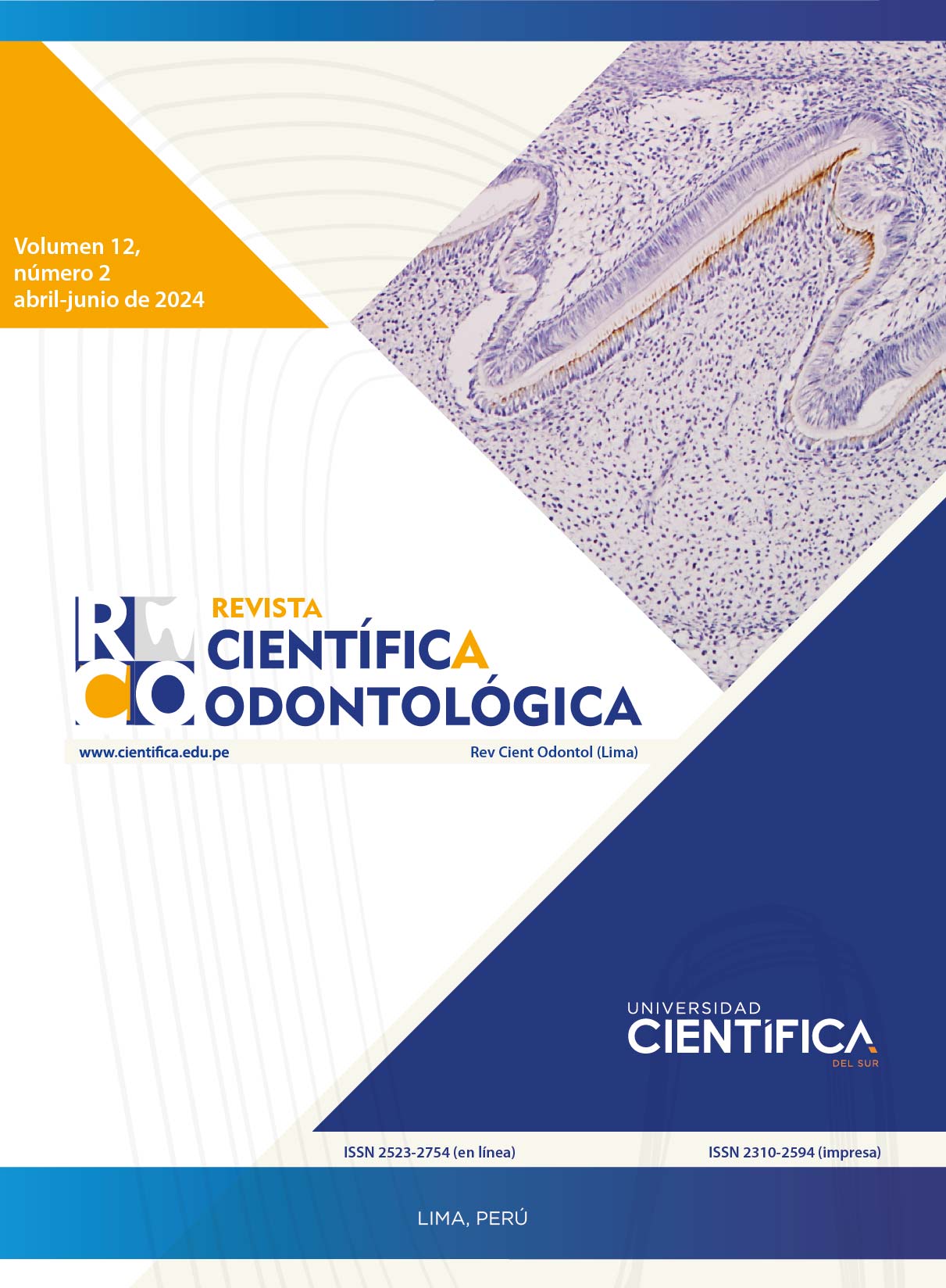Dental caries in two Incas populations. A cross-sectional study
DOI:
https://doi.org/10.21142/2523-2754-1202-2024-195Keywords:
paleopathology, dentistry, oral health, dental cariesAbstract
Objective: Compare: frequency, severity and location of dental caries between archaeological populations of the Sacsayhuamán and Machupicchu samples. Material and Methods: This was a retrospective, cross-sectional and observational study. The variable dental caries was observed directly in the Sacsayhuamán and Machupicchu samples from the Cusco culture directorate. 39 individuals from the Sacsayhuamán sample with 566 teeth and 49 individuals from the Machupicchu sample with 467 teeth were analyzed. The unit of analysis was the tooth. The variable was statistically analyzed by frequencies and proportions and the differences were analyzed using the Chi test. -square. Results: In the Sacsayhuamán sample, pieces with cavities had a frequency of 31.8%, while in the Machupicchu sample they reached a frequency of 23,6%. Regarding the location: in the Sacsayhuamán sample: The following frequencies were obtained: occlusal caries 44,38%, coronary caries 3,37%, caries in the amelocemental line 32,58%, root caries 19,66%; while in the Machupicchu sample the following were obtained: occlusal caries in 60,91%, coronary caries in 3,62%, caries in the amelocemental line in 24,55%, root caries in 12,91%. Regarding severity, we found the following frequencies: in the Sacsayhuamán sample: enamel/cementum caries in 52,81%, dentin caries 33,71%, pulp involvement caries 13,14%, while in the Machupicchu sample: enamel/cementum caries 49,09%, cavities of dentin in (27,27%), caries involving pulp involvement 23,64%. Conclusions: When comparing the samples, differences were found with respect to the frequency of dental caries and with respect to the location, but no differences were found with respect to the severity.
Downloads
Downloads
Published
Issue
Section
License
Copyright (c) 2024 Darwin Ortiz de Orué Ninantay, Ebingen Villavicencio Caparó, María del Carmen Peña Alegre

This work is licensed under a Creative Commons Attribution 4.0 International License.

Este obra está bajo una licencia de Creative Commons Reconocimiento 4.0 Internacional.












